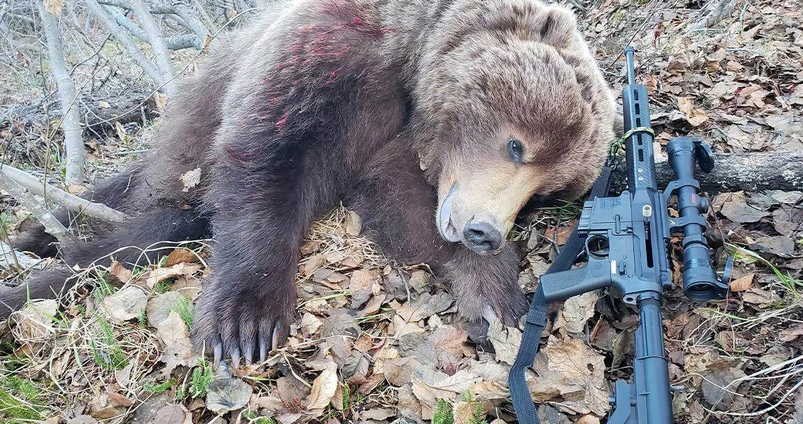
If you’d told me four years ago that I’d be sitting in the woods near my home in Alaska, hoping for a big-boar grizzly to come to bait, and planning to take it with an ultra-light AR rifle chambered in .223 Wylde, I wouldn’t have dismissed it out of hand. If you knew me, you’d understand. However, I definitely would have had my doubts. Yet, that’s exactly where I found myself sitting in the fading light in a spruce forest, listening to mosquitoes, red squirrels and gray jays, waiting for the boar we’d caught on the game camera a couple of days prior with that exact rifle sitting next to me. Hours passed and nothing bigger than a magpie stirred. I’d already decided to call it and head home at 9:30, and that time was getting close. It was looking like today wasn’t going to be the day to test this idea. You might be wondering how this crazy idea of hunting a grizzly with a heavy-for-caliber .223 Wylde came about in the first place, but I really can’t take credit for that part. For a couple of years, I’d been following an online discussion of guys using the .223 Rem. with heavy-for-caliber match bullets for big game up to and including elk. On the surface, that sounds crazy at worst and irresponsible at best. The conversation started with far more naysayers than proponents. However, as time went on and more people tried it, and posted pictures of terminal performance, including through elk shoulders, on par with much larger chamberings, the naysayer-to-proponent ratio shifted dramatically. The results speak for themselves.

Although interesting, this .223 information was mostly academic to me. For years, my go-to hunting rifle was my sub-five-pound (bare rifle), sub-MOA Kimber Montana chambered in .308 Winchester. It did everything I asked and more. It appeared a .223 could work on the surface, but I knew from years of experience that my .308 did work, so why change it? Well, steep mountains can be highly convincing. Where I live, hike and hunt, slopes are often closer to vertical than horizontal. I’d been lightening gear for years, including my rifles, but I’m always looking for ways to lighten things further, including my rifles, and the AR platform is easy to make super light. I eventually landed on the Solo 300 website when working on my super-light AR build. The Solo 300 is an AR upper designed specifically as a straight-pull repeater with no gas system. My first Solo build was a 300 HAM’R, built with a Wilson Combat barrel. The bare rifle weighed a mere three pounds, eight ounces and was every bit as accurate as my Kimber Montana. The little HAM’R has performed admirably, cleanly taking black bear, deer, moose and even grizzly, but my quest for lighter gear hadn’t ended. I thought about ways to build an even lighter version of the Solo and still have a 300-plus-yard effective range on game. That online discussion about the .223? It wasn’t just academic anymore.

